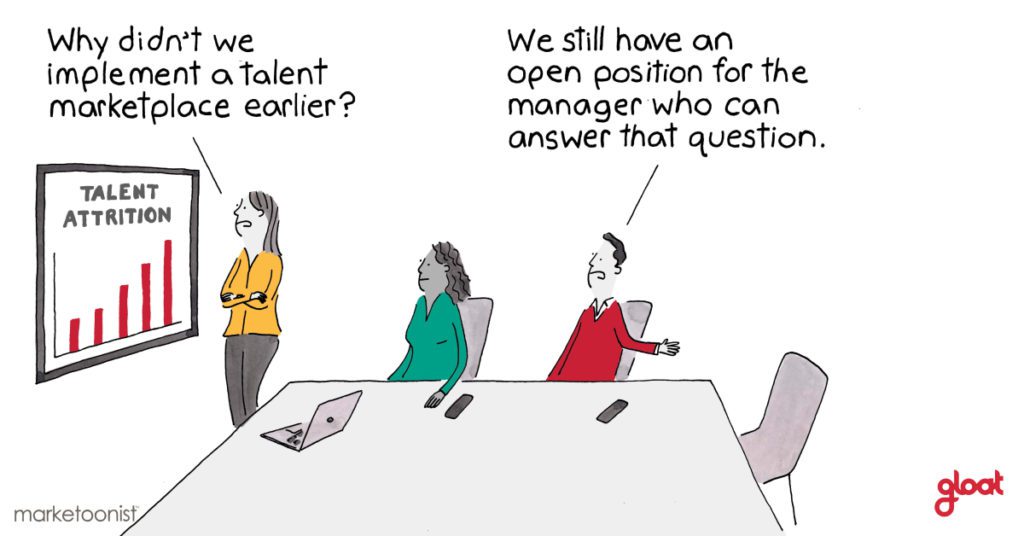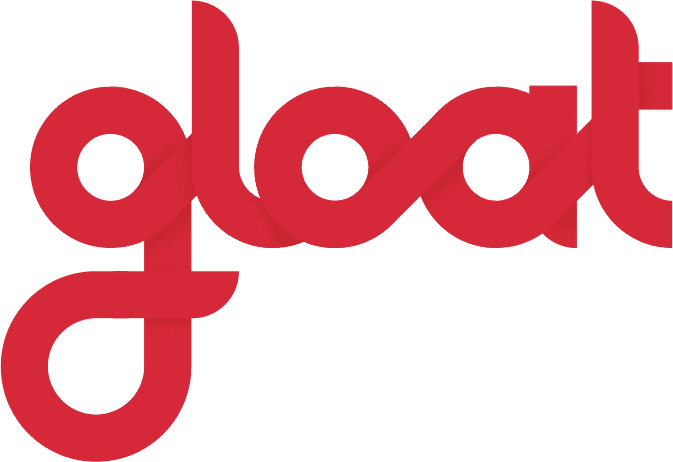August research roundup: gearing up for the next chapter of transformation

What I am reading, listening to, and thinking about in the world of talent marketplaces and workforce intelligence

By Jeff Schwartz, VP of Insights and Impact at Gloat
Transformation is at the top of every organization’s agenda (just look at Mercer’s new stat that 96% of companies are planning enterprise-wide transformations for proof). As we turn to the last quarter of 2022, leaders are already scoping out their transformation agendas for 2023 and the years ahead. Executive teams and workforces must rise to meet the opportunities and shifts around us: changing workforce expectations for growth, purpose, and flexibility; preparing for the next chapter in a world where hybrid and remote work are front and center; and harnessing workforce technologies and programs to change the game—not just incrementally optimize what we’ve been doing for years.
The theme I’m proposing as we move to 2023 is to intently focus on the next horizon. There are new challenges that require new approaches Now is the time to be asking questions about where you want your organization to be, and the headlines you want to be written for years to come.
To change the game, you need to make game-changing moves and ask game-changing questions. Now.

Here are some recent articles, reports, and podcasts to expand the scope and scale of transformations which are, hopefully, shifting into high gear as we all plan how to end 2022 and prepare for 2023:
READ What’s new in thought leadership about the future of work
‘Head of Team Anywhere,’ and Other Job Titles for an Uncertain Time, New York Times, by Emma Goldberg
New York Times writer Emma Goldberg explores how organizational strategies and job titles are evolving as times change. New roles such as Head of Team Anywhere, Leader of Talent Marketplaces and Internal Mobility, and VP of Digital Talent provide important insights into the priorities that will dominate future of work discussions for years to come. As the pace of change accelerates and operating strategies continue to evolve, leaders should expect these new roles to quickly become commonplace.
Hybrid Work Reduced Attrition Rate by a Third, Study Shows, Bloomberg, by Reade Pickert
While many organizations are still trying to find the right balance between remote and in-office working, new research pinpoints just how beneficial hybrid arrangements can be. A new study co-authored by Nicholas Bloom at Stanford found that hybrid working reduced attrition rates at a large technology firm by 35% and improved self-reported work satisfaction scores, with no negative impact on performance ratings or promotions. As discussions regarding return to office plans continue, leaders can’t lose sight of the powerful role that agency and autonomy play in boosting employee value propositions. Nick’s research, Work from Home (WFH), is an indispensable resource for planning hybrid and remote strategies.
The Rise of the Worker Productivity Score, New York Times, by Jodi Kantor and Arya Sundaram
Jodi Kantor and Arya Sundaram shed light on the rise of an emerging workplace trend: technology designed to monitor employee productivity. Across industries and income levels, more employees are being tracked, recorded, and ranked to measure efficiency and accountability. While these tactics may boost output levels, there’s also a real risk that introducing employee monitoring technology will diminish trust levels and have negative impacts on your workplace culture.
Stop Offering Career Ladders. Start Offering Career Portfolios., Harvard Business Review, by April Rinne
It’s not just workplaces and job titles that are getting a shakeup; approaches to career development are also evolving in the new world of work. April Rinne explores how companies can win the war for talent on a battlefield that has drastically changed. She pinpoints the shift in how we think about the shape of careers: embracing a portfolio approach, rather than thinking of professional development as a vertical ladder. The longevity dividend, 100-year lives, and the rapidly evolving world of skills are key drivers in the shift from ladders to portfolios.
The Confusing Job Market: CEOs and CHROs Seem Baffled, JoshBersin.com, by Josh Bersin
According to leading industry analyst Josh Bersin, many C-level executives may feel like they’re at a standstill. While 52% of leaders are implementing hiring freezes, 64% are simultaneously increasing compensation, likely to retain top talent in an increasingly competitive hiring landscape. Bersin believes that much of this confusion stems from uncertainty about whether or not we’re heading towards a recession. His top takeaway for leaders is that this isn’t a traditional, demand-driven downcycle. Instead, it’s a rapid change in demand that requires businesses to recalibrate their strategies and embrace internal mobility to unlock the level of agility that the new world of work requires.
The HSM Newsletter: Getting a Headstart on Autumn Priorities
HSM Advisory, the consultancy led by Lynda Gratton (at London Business School and author, most recently of Redesigning Work, MIT Press 2022) puts out a monthly newsletter dedicated to exploring the topics that are shaping future of work discussions, and the August edition is one that you can’t miss. The theme speaks on getting a headstart on autumn priorities, including redesigning the office, rethinking wellbeing, and finding true purpose at work. There’s also a deep dive section for each of the priorities listed above, so you can learn more about why each of these pillars is critical for achieving success in the new world of work.
LISTEN What I’ve been playing on repeat
Transformation in practice: Standard Chartered Bank, Mercer, with Tanuj Kapilashrami and Ravin Jesuthasan
While most leaders recognize that transformation is a necessity, there’s still a lot of uncertainty about what successful strategies look like. Fortunately, there are a few trailblazing organizations that are already further along in their reimagination journeys, and Standard Chartered Bank is one of them. Their Chief Human Resources Officer, Tanuj Kapilashrami, recently joined Mercer’s Ravin Jesuthasan to discuss the evolution of work, its movement beyond the traditional boundaries of the organization, and what will help individuals and organizations thrive in the future.
People and places: How and where to work next, McKinsey, with Naomi Hudson, Phil Kirschner, and Martin Rosendahl
While leaders initially feared that productivity would nosedive as employees shifted to remote working during the early days of the pandemic, many executives found that output levels soared. Now that companies are bracing for their next normal, they’re looking for ways to maintain those gains through new hybrid working models enabled by digital technologies. In this episode of McKinsey Talks Operations, host Daphne Luchtenberg is joined by Naomi Hudson, Phil Kirschner, and Martin Rosendahl to explore the key decisions that will shape how workplaces function in the future.
THINK What research and studies are saying about our path forward
Women Aren’t Promoted Because Managers Underestimate Their Potential, Yale Insights, by Kelly Shue
New research from Kelly Shue and co-author Alan Benson explores why women are often overlooked for managerial positions. The study found that women are 14% less likely to be promoted at a company each year and that a major factor preventing women from being promoted is that they are consistently judged as having lower leadership potential than men. In a two-part annual assessment, women’s performance is rated higher than men’s on average, while their potential is perceived to be lower. Rather than letting perceptions and preconceived notions sway talent management decisions, equitable organizations are harnessing disruptive technology like the talent marketplace to democratize career development.
The Four-Step Process for Redesigning Work, MIT Sloan, by Lynda Gratton
There’s nothing simple about reimagining work. From rethinking organizational structures to creating more flexible and fluid ways of working, leaders have a lot to consider as they carve their path forwards. And all too often, executives are falling back into familiar ways of operating and becoming less empathetic to what their employees want. Instead of resorting to old ways of working, Lynda Gratton encourages leaders to confront their concerns head-on and embrace an experimentation mindset to prepare for the disruption that lies ahead. From Lynda’s recent bestseller: Redesigning Work: How to Transform Your Organization and Make Hybrid Work for Everyone (MIT Press, 2022), from which this article is adapted.
Global Talent Trends 2022, Mercer
According to Mercer, we’re witnessing the rise of the relatable organization. There are five success drivers that fuel these sustainable organizations: reset for relevance, work in partnership, deliver on total wellbeing, build for employability, and harness collective energy. Some top findings from this year’s report include:
- 89% of employees expect their employer to pursue a sustainability agenda
- 56% of employees will only join a company if they can be remote/hybrid
- 38% of companies are introducing mental or emotional well-being strategies
- 81% of companies are investing in AI-powered skills identification/valuation
- 96% of organizations are planning enterprise-wide transformation in 2022
CONNECT What future-fit organizations and leaders are talking about
The Evolution of HR, Linkedin, Jacob Morgan
Most leaders know that the HR function is changing, but not all recognize just how profound the shift is. Best-selling author Jacob Morgan contrasts how the department functioned in the past with what HR expectations look like in the present. Most notably, HR is now tasked with reimagining the status quo, harnessing data and analytics to steer their organizations towards success, and reshaping the employee experience.
Let us know what you would add to our list.






